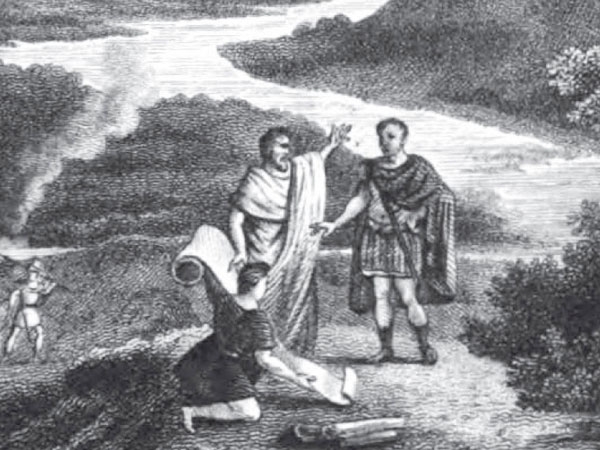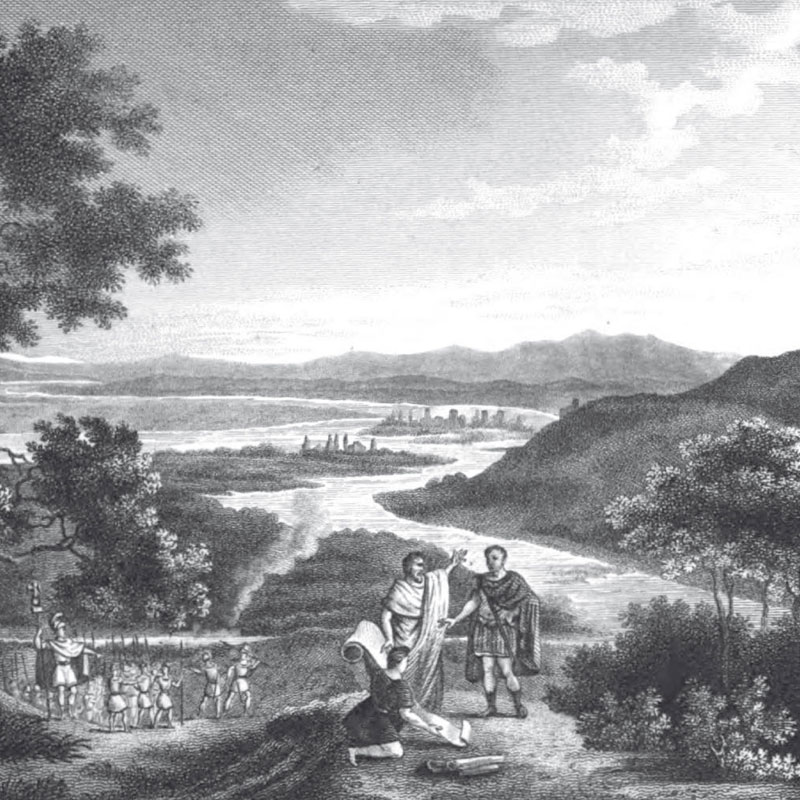A pile of rocks can give rise to foundations or to ruins. Valeriu Butulescu.
43 B.C. Among the Gauls of Vienne (the Allobroges), it's the call to battle. They have just learned of the assassination of Julius Caesar. Now that their old enemy has ceased to be a threat, they are no longer afraid to chase away the Romans living in their city! What will happen to them?
The Roman Senate sends General Lucius Munatius Plancus to the rescue. His mission is to find a city on a hill next to the Rhône, where the expelled Romans have found refuge. Plancus is aware that this is a great honor for him and takes the responsibility very seriously. He won't forget to mention it on his funerary monument (the museum displays a reproduction of the inscription).
"Operation Lugdunum" is exceedingly diplomatic, because the situation is delicate. Effectively enough, the Senate must ensure the protection and honor of its citizens. But it's complicated to directly attack the Allobroges because they are useful allies in a territory that was just recently conquered. By founding a city right next to Vienne, Plancus gives the expelled Romans a privileged status without having to wage war.
Founding a city takes hard work. The first of a long series of steps is to determine the layout of the main roads. Near the museum, you can still see the emplacement of one of the two major streets that crossed the new city.
And it's not the only souvenir that Plancus left on the Lyon roadway layout. In 2016, the municipality decided that it, too, would honor Plancus. On Fourvière Hill, where he founded the city long ago, a street now bears his name!
By Artips


